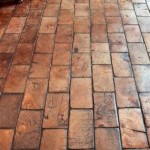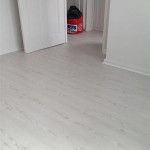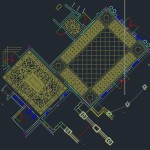Essential Aspects of Heated Basement Flooring Options
Transforming your basement into a warm and inviting living space requires careful consideration of flooring options. Heated basement flooring provides an unparalleled solution for combating cold and drafty conditions, enhancing comfort and elevating the overall ambiance of your subterranean abode.
Understanding the essential aspects of heated basement flooring is paramount in making an informed choice. Here are the key factors to keep in mind:
Type of Heating System
The first step is choosing the type of heating system you want for your basement. There are two primary options:
- Electric Radiant Floor Heating: This system involves installing electric heating cables or mats beneath the flooring material. It provides even heat distribution and is relatively easy to install.
- Hydronic Radiant Floor Heating: This system circulates hot water through pipes embedded in the floor. It offers excellent energy efficiency and can be integrated with other heating systems.
Flooring Material Compatibility
Not all flooring materials are suitable for use with heated flooring systems. Some common choices include:
- Tiles: Ceramic, porcelain, and natural stone tiles conduct heat well and are ideal for heated floors.
- Engineered Hardwood: This type of hardwood is more stable than solid hardwood and can withstand the fluctuations in temperature associated with heated flooring.
- Laminate Flooring: Laminate flooring is a cost-effective option that can mimic the look of hardwood or tile while being compatible with heated floors.
Installation Considerations
Proper installation is crucial for the effective operation of heated basement flooring. Factors to consider include:
- Subfloor Preparation: The subfloor must be level and free of any imperfections that could affect heat distribution.
- Insulation: Insulating the subfloor below the heated flooring system is essential to prevent heat loss and improve energy efficiency.
- Floor Sensor Placement: A floor sensor is used to regulate the temperature of the heated flooring. Proper placement is crucial to ensure even heating and prevent overheating.
Maintenance and Regularity
Like any other flooring system, heated basement flooring requires regular maintenance. This includes:
- Routine Cleaning: Cleaning the flooring surface regularly will prevent dirt and debris from accumulating and impairing heat distribution.
- Floor Sensor Inspection: Periodically inspect the floor sensor to ensure it is functioning correctly and not causing any issues.
- System Troubleshooting: In the event of any malfunction, it is essential to contact a qualified electrician or plumber for troubleshooting and repairs.
Conclusion
Choosing the right heated basement flooring option depends on several factors, including the type of heating system, flooring material compatibility, installation considerations, and ongoing maintenance. By carefully evaluating these aspects, you can create a warm and comfortable basement living space that will enhance the functionality and appeal of your home.

How To Heat A Basement Heated Floor Guide 2024 Green Wave Dist

Heated Basement Floor Systems And Cost Warmup Usa
.jpg?strip=all)
The Best Types Of Flooring For Radiant Heating

Hydronic Vs Electric Heated Polished Concrete Floors Victoria Stone Design Terrazzo

Heated Floors Mat Radiant Floor Heating System Warmzone

Best Flooring For Basement Renovations

Best Basement Flooring The Warmest Floor Covering Is Cork

10 Basement Heating Options To Keep You Warm Cozy In Winter

The Best Types Of Flooring For Radiant Heating

Heated Basement Floors Floor Heating
Related Posts








